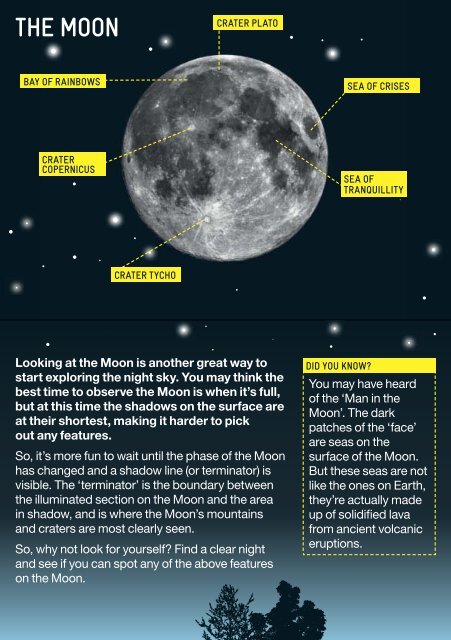Stargazing LIVE Star Guide - Thinktank
Stargazing LIVE Star Guide - Thinktank
Stargazing LIVE Star Guide - Thinktank
You also want an ePaper? Increase the reach of your titles
YUMPU automatically turns print PDFs into web optimized ePapers that Google loves.
ThE Moon<br />
BaY of rainBoWs<br />
CraTEr<br />
CoPErniCUs<br />
CraTEr TYCho<br />
CraTEr PLaTo<br />
Looking at the Moon is another great way to<br />
start exploring the night sky. You may think the<br />
best time to observe the Moon is when it’s full,<br />
but at this time the shadows on the surface are<br />
at their shortest, making it harder to pick<br />
out any features.<br />
So, it’s more fun to wait until the phase of the Moon<br />
has changed and a shadow line (or terminator) is<br />
visible. The ‘terminator’ is the boundary between<br />
the illuminated section on the Moon and the area<br />
in shadow, and is where the Moon’s mountains<br />
and craters are most clearly seen.<br />
So, why not look for yourself? Find a clear night<br />
and see if you can spot any of the above features<br />
on the Moon.<br />
sEa of CrisEs<br />
sEa of<br />
TranQUiLLiTY<br />
DiD YoU knoW?<br />
You may have heard<br />
of the ‘Man in the<br />
Moon’. The dark<br />
patches of the ‘face’<br />
are seas on the<br />
surface of the Moon.<br />
But these seas are not<br />
like the ones on Earth,<br />
they’re actually made<br />
up of solidified lava<br />
from ancient volcanic<br />
eruptions.


